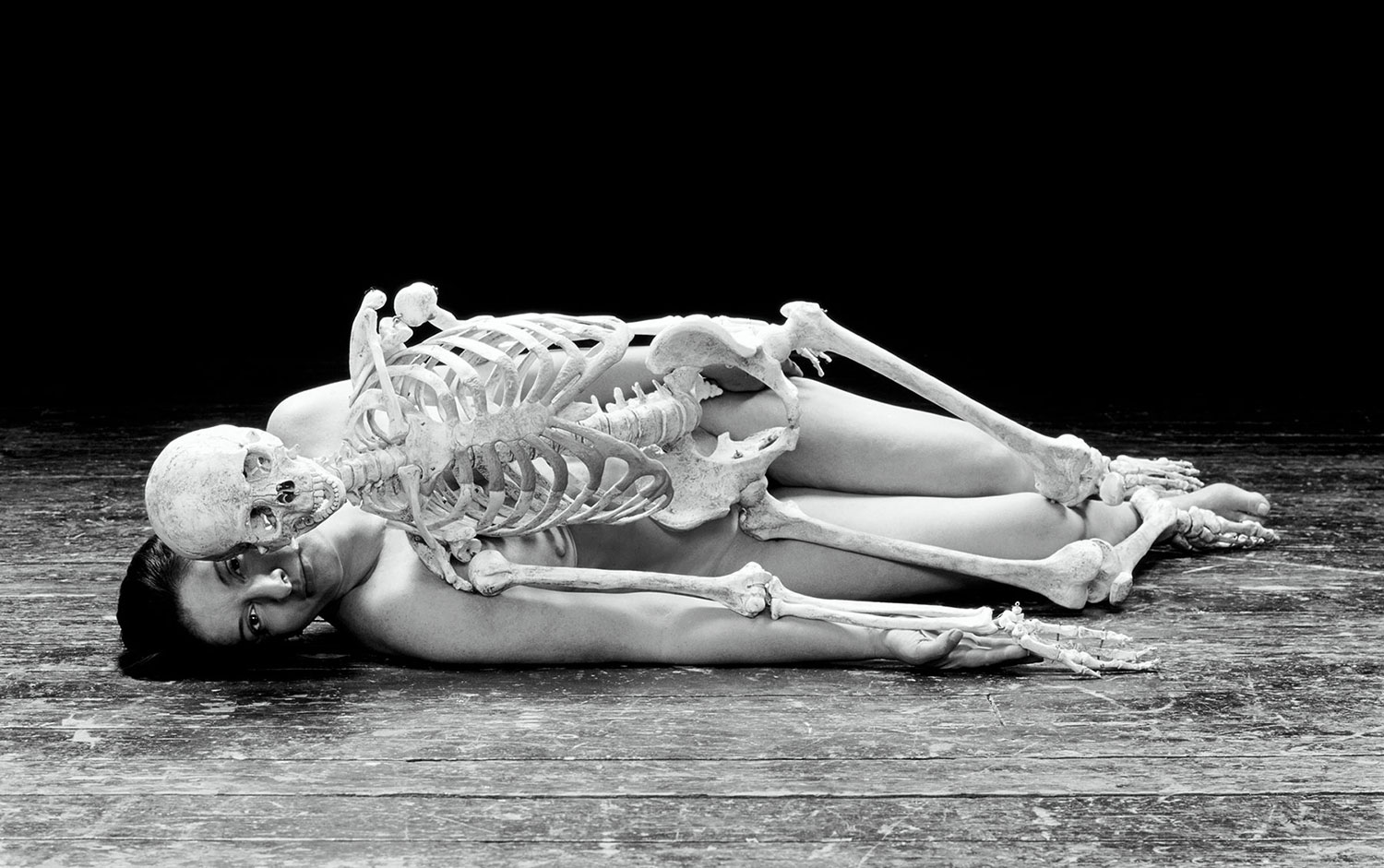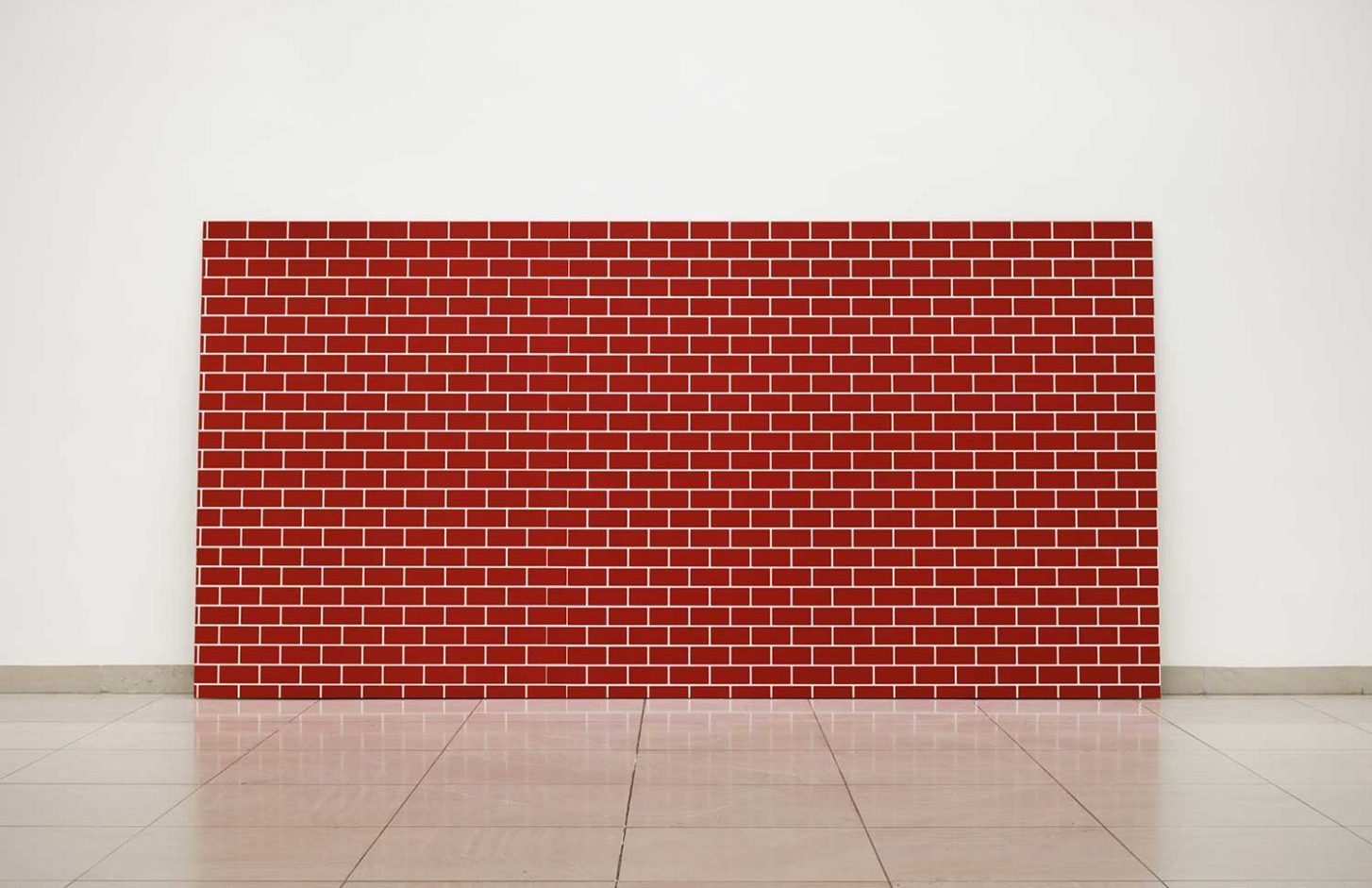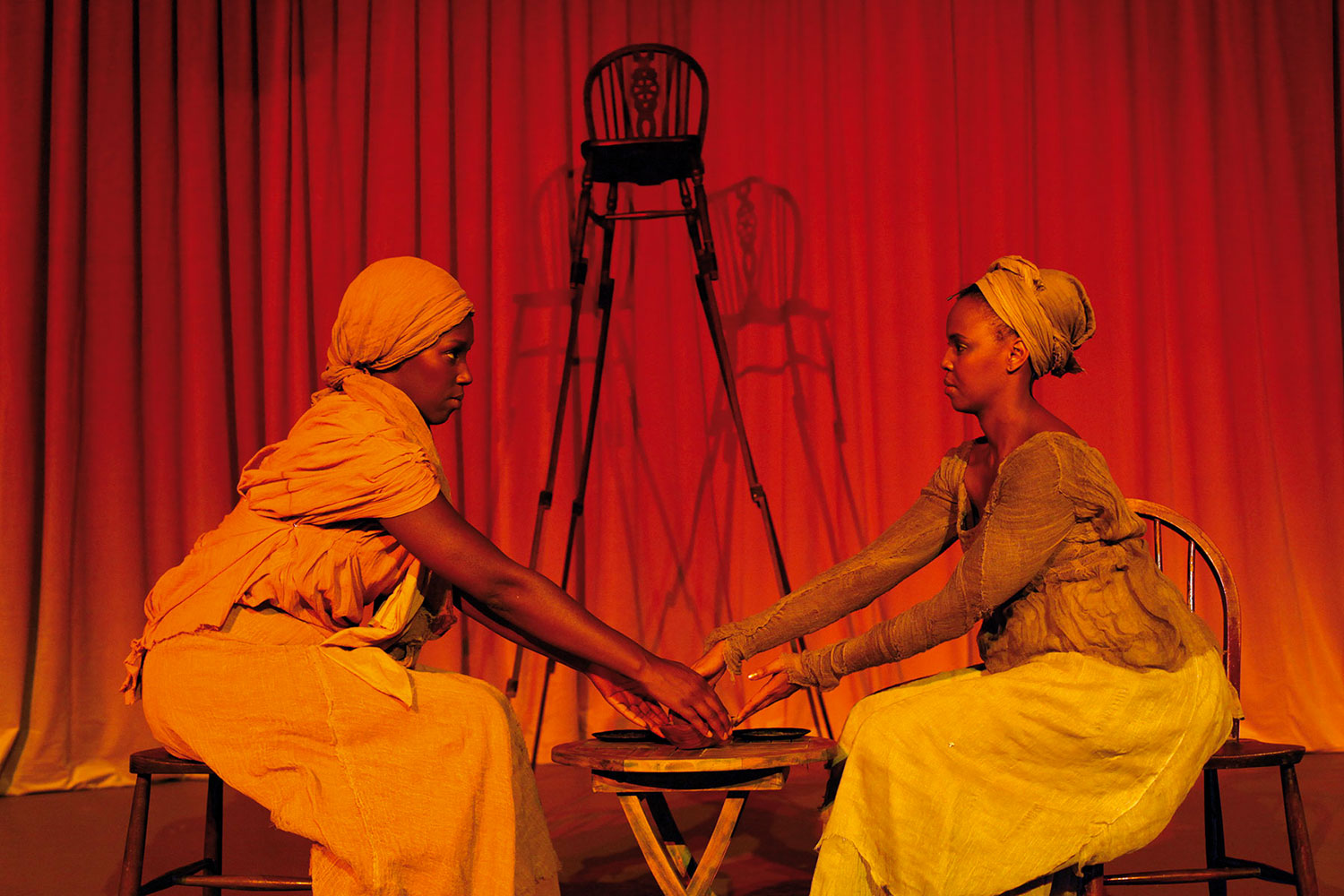
Heidi Zuckerman Jacobson: Tell me about the title of your exhibition at the Aspen Art Museum.
Haegue Yang: The title “The Art and Technique of Folding the Land” is a translation of a Korean word I had in mind. It refers to a very specific technique for moving through the world. For example, as described in Taoism, you jump from mountain peak to mountain peak by folding the land. I found this and many other techniques described in ancient Taoism interesting because they are mystical and spiritual. But at the same time, they are similar to what we try to do with modern technology to overcome the distance between places and people. I’m an artist who travels a lot, and I think there is a specific sentiment and identity that comes through excessive traveling. It is being alone but thinking about the relationship to oneself at the same time. This happens while moving around with exhibition schedules. I like to see these mundane aspects of contemporary life in a Taoist way.
HZJ: You’re interested in many different philosophies, spiritual practices and concepts of the sublime. Can you talk about those interests?
HY: Yes. I’m wondering about that myself actually. I’m not a person who necessarily does yoga, meditation or spiritual practice in my daily life, so I question why I am intellectually concerned with these notions, and what it means. Must we call it spiritual practice instead of just a reference? I think at this point the only answer I can come up with is dance. Dance as a general term for movement; movement is physical but at the same time can refer to ideological and social movements. Maybe I’m someone who is interested in taking ideological movement from the physical. I think the same goes for spirituality. I’m interested in simple daily life as well the mystical aspect of it, however not necessarily in religious practice. It is difficult to be engaged both in everyday life and reality and the contingency of it; my belief is that there is a mysteriousness and spirituality in the most banal things. So my interest might be to reveal or make a crack in that mundaneness and show a glimpse of the miraculous.
HZJ: One thing that happens in your work is the creation of a poetics of the mundane. So a lot of your materials are objects that you find in a supermarket or an electronics store, but you add something, like knitting for example. Taking things that are everyday objects and changing them in these little ways is maybe what lends insight.
HY: I call the process “domestification.” Which is happening both to the materials and objects as well as to me. Primarily, I think I want to be domesticized in a unique way since I am often in the position of observer or visitor. When that happens, I am changed by thoughts and emotions, I feel like I’m domesticized in that place, by that person, or by the very moment of an event or encounter.
HZJ: For me it’s a very hopeful notion that there can be something greater than that which we think we’re doing. If we can see in the things that we have to do every day — whether it’s cleaning or any kind of repetitive activity —something more than it is, connect it to something that has value beyond the immediate, then I think that’s a very hopeful idea.
HY: I am a strange optimist in the sense that most of the time I’m complaining. It almost sounds perverse, someone who invites pain and discomfort but at the same time is an optimist. I really do believe that there is nobility in the recognition and endurance of difficulty. With sufficient energy and capacity, we can interpret the difficult, painful and exhausting as noble and dignified. Also, we all know that people are not always or immediately understood, so some sort of tolerance is always needed — which is a socially engaged idea, whereas endurance is less socially concerned. I wish I could start with the former, yet eventually reach the latter, which is more absolute than relative.

HZJ: I think the question of how we are understood is really interesting, and particularly with your work, because when you look at it, there are elements that are very familiar. So there is a place for the viewer to ground him or herself with comfort or knowledge. They recognize a vegetable steamer or a piece of wood or some spam or some knitting. To be known beyond the immediately knowable is a very difficult and profound life question. If we’re honest with ourselves, we all seek to be truly understood, to be truly known.
HY: That’s tough to accept but it’s very true, and I agree that it’s difficult to decide whether I have an ability to convince the public to think in a certain way. As an artist you attempt to communicate with your audience. I hope that the way I work is ambiguous and demanding enough that, even if elements of it are familiar, or even intimate, there is a hybrid quality that makes people question. So in the group of sculptures Wild in Aspen (2011), for example, a steamer plus a washing sponge plus a clothing rack is something questionable. There is some kind of plus/minus that brings us — it sounds almost cliché — to a different dimension and level of thinking that goes a little bit beyond what we call conventional.
HZJ: There’s no question that your work is ambiguous, rigorous and difficult enough to pose questions. Your reference to this idea of going to another dimension is what I call the possibility of transcendence. I don’t think it’s possible to take the viewer there if they are comfortable. It’s only through the fracture you referenced — the moment of fusion or fracture between the known and the unknown — that allows the possibility to occur.
HY: Comfortable, easy, convenient things are pursued collectively in society, and terms such as “difficulty,” “ambiguity,” “pain” or “effort” have a negative connotation. This is the stuff we try to avoid. Another way to approach these negative terms is to see them as “oblique” instead of difficult — so that we can face them more courageously. We could think of the perception of the concept in art; it’s a tricky thing to achieve perceptual “obliqueness,” that is, perceiving something without a didactic, verbal explanation. In “The Art and Technique of Folding the Land” you see the space through layers such as walls, sculptures, wallpaper. You find seating next to a pyramid of Spam cans — Can Cosies Pyramid – Spam 340g Gold (2011) — which will all filter and trigger your perception. You can physically walk around the sculpture, which is almost life size, anthropomorphic. There is a figurativeness in which you slowly reflect yourself, and in the best case, there is an immediate dialogue between the figures and yourself as another figure in a shared space. That is what I hope — that my works become props and that there is a sympathy, empathy or even antagonism that helps you become a part of this field.
HZJ: What is the relationship between thinking and emotion in art?
HY: Tough question. I think I can only talk about it indirectly by revealing how I deal with my emotions, and similarly, how I see my profession. The primary and fundamental emotion I have as an artist is a feeling of embarrassment. If I want to feel comfortable, I shouldn’t do anything but lead a very simple life, just live in satisfaction. But that’s not the life I’m currently leading, so I have to get over this embarrassment of expressing things, of insisting on something, and that’s not so easy. I think we all lead our life in a certain way, and there comes this uncomfortable and uneasy emotion out of our eagerness that is difficult to embrace because we recognize that our aim and goal feel bigger than us. This overwhelming feeling is a sign that we feel responsible and whatever we do in society affects other people, so we want to do the job well, and therefore all these difficult emotions arise. Being vulnerable has been such an important emotion for me, because it has something to do with being in a community and aspiring to something better, enduring one’s own uneasy emotions to attempt something hopeful. Politics, being innovative — all those things we want to achieve socially have something to do with these emotions, and there is a close relationship I believe.

HZJ: It sounds like you think — and I would agree with you — that there’s great responsibility in the creation and presentation of art, and those responsibilities include not just the personal and psycho-emotional, but the political and social.
HY: Being creative is a privilege, and privilege always comes with responsibility and a feeling of duty. I feel quite privileged in that sense. I guess that’s probably how most artists feel, and maybe that’s why society needs art and culture, although I can’t understand why the cultural producer should exist and have all this opportunity. Even in quite difficult circumstances art has been really supported by society, as we know from history and other studies.
HZJ: You mentioned to me earlier that you make art in your home. When you’re not making art, what else do you do?
HY: That’s a difficult question because I think I’m quite a slave to my work, so I tend to instrumentalize or sacrifice something in my life in order to focus.
HZJ: That’s kind of why I asked you the question, because I figured that was the answer. So when you’re not actually physically making art, what you’re doing is preparing to make art, either through reading or looking or your other experiences.
HY: I think my strategy for dealing with my so-called free time is very passive-aggressive. So if I go out, I only go out if someone asks me, meaning there is a role to play. If I take a rest, it’s just because I’m really exhausted, so literally exhausted that I can feel it. I make my own very strange subjective distinction between work and labor. For me work is something so complex that the backside of work is not rest. Work even includes rest and maybe just being bored, while labor is driven by the practicalities of efficiency and productivity. At some point I got a lot of advice from my beloved friends, who said: “Haegue, you need to rest.” But because I’m interested in work, not in labor, there is no need for rest, only a need for exhaustion. I think the work of creative people is out of sync with the conventional economy. Sometimes we’re paid very well, sometimes horribly. We don’t get paid per hour. We don’t compare our salary with others. We just don’t use the same metrics. Maybe therefore artists share the Taoist dream of folding the land.





